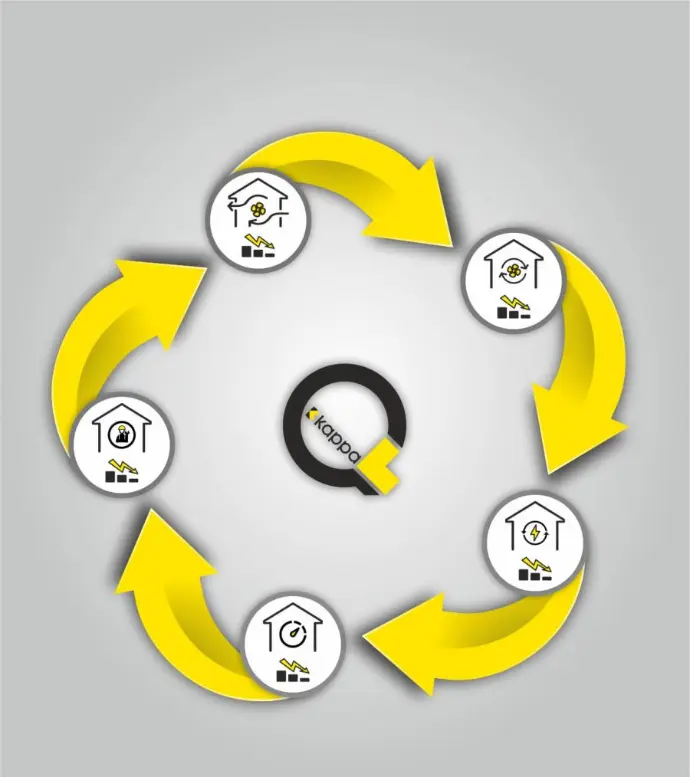Lever 4
KappaQ-Energy onDemand
The fourth lever ‘onDemand’ deals with the synchronisation of the air output to the current demand.
The system should only run at full capacity when demand is high. Low production capacity utilisation should be recognised by the system and the air flow rate adjusted accordingly. This is the only way to ensure that the ventilation system works continuously at the energy-optimised operating point. Our experience shows that energy requirements can be reduced by more than half through synchronisation.
OUR RECOMMENDATION
- Use the experience in your company and draw on the expertise of external partners to consider all the possibilities of system automation and automatic output control for your ventilation systems.
- Determine the required maximum and minimum output as well as the average output and the resulting savings effects.
Case study
energy-efficient
system operation
By retrofitting the intelligent automation system Kappa AirdynamicTM in a production and assembly plant, Kappa was able to adapt the ventilation output control to the current demand in real time.
During routine maintenance, the potential for energy savings for the customer through load-dependent capacity control was recognised. Together with the customer, we analysed the initial situation and created a load profile. From this, we were ultimately able to determine the savings effects.
RESULTS
- By retrofitting the Kappa AirdynamicTM load-dependent control system, the customer saves 470,000 kilowatt hours of electricity per year.
- This corresponds to an annual CO2 saving of 344,040 kilograms and the annual CO2 capture of 27,520 adult beech trees.
More about
KAPPA AIRDYNAMICTM LOAD-DEPENDENT SYSTEM CONTROL
KAPPAQ-ENERGY COMPONENTS
IS A LEVER OF THE
ENERGY-SAVING-CONCEPT
»KAPPAQ-ENERGY«
KappaQ-Energy is the energy-saving concept for minimising the energy costs of ventilation systems.
It illustrates which factors influence the energy requirements of ventilation and air-conditioning systems and which levers make it possible to massively reduce energy consumption in the long term.





